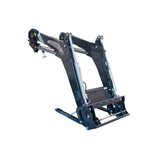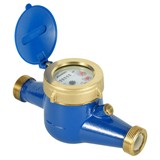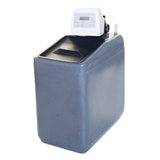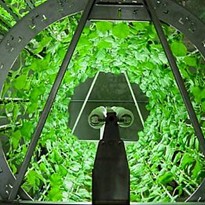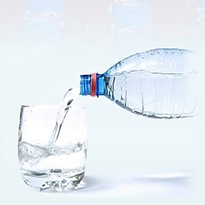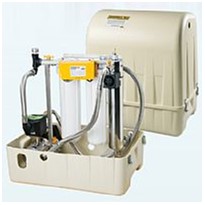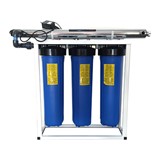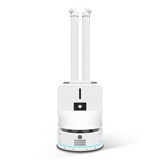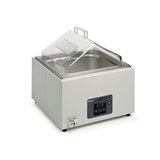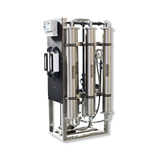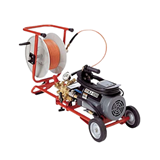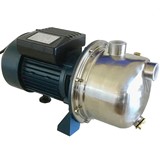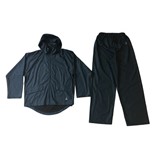UV disinfection systems cleanse water using UV light at the 254 nm wavelengths, at this wavelength UV light actually destroys the DNA of microbiological material in the water, which prevents dangerous viruses such as cryptosporidium and e-coli from reproducing and causing harm. However, the effectiveness of a UV disinfection system is determined by the UV dose that the UV disinfection system is able to deliver to the water.
The UV dose is dependent primarily on the combined effects of the UV light intensity, the exposure time of the system and the UV transmittance (UVT) of the water.
The intensity of the UV light source depends on the size and type of UV lamp used and the power supplied to the lamp. The exposure time of the system depends on the flow rate of the system.
The flow rate is often regulated between multiple UV disinfection systems operating in parallel, and there is often a manufacturer specified maximum flow rate for the system. The UV transmittance of the water (UVT) being disinfected can significantly affect the effective UV dose delivered to the water by the UV disinfection system and it varies over time and from site to site.
UV transmittance is related to the quantity of organics, colloidal solids and other material in the water, which absorbs and scatters the UV light as it passes through the water. In a UV disinfection system, if the UVT of the water is too low, then the UV light is not able to penetrate the water as efficiently, thereby reducing the effective UV dose delivered by the system.
This is why UV system manufacturers usually state a minimum UV transmittance for a UV disinfection system, below which the system will not function properly.
Turbidity & Colour
It is often thought that if the water appears clear to the naked eye, or if the turbidity is low then this means the UV transmittance will be high. However, this is not correct.
Turbidity is a measure of the quantity of suspended solids in the water and is not related to the organics or fine particles that tend to affect UVT. It is true that colour usually does indicate the presence of organics in the water such as tannins and humic material.
However, it does not follow that just because the water doesn't appear coloured that the UVT will be okay. This is because some organics and other matter can be present in the water that cause low UVT but do not add any visible colour to the water; an example of this is pesticides.
Changing UVT
Often one water source can contain a varying amount of organic material, and therefore will have different UV transmittance values at different times. This is especially true for surface water application such as a lake or river.
Different kinds of weather can potentially affect the UVT of a water source, which tends to cause significant changes in UVT from season to season.
Due to the effects of UV transmittance on the performance of UV disinfection systems, it is vital the UVT of the water be known for every UV disinfection system application to ensure proper treatment.
UVT Monitoring Options
There are a now number of options for monitoring the correct operation and performance of UV disinfection systems. Which of these product options you choose will depend on your water treatment application, the location of your treatment plant and the regulatory environment that governs your water application. Depending on the product selected, UVT measurements can be taken continuously, automatically and in real-time, or alternatively grab samples can be taken using handheld monitors.
Applications requiring continuous, automatic, real-time monitoring can take advantage of submersible probes ideal for open channel applications or use inline probes for process and potable water. Fluidquip Australia is an example of a specialist in UV disinfection and UVT monitoring that can match an application to the best UVT monitoring options available from a range of manufacturers.
Broadly speaking, the range of UVT monitors available fits into the following categories:
Grab Samples and Portable Solutions
Portable UVT monitors are ideal for providing on-site UVT tests on grab samples with results available in a couple of minutes. When purchasing a portable monitor ensure you specify the application and purchase a monitor designed for your application whether that be wastewater, drinking water or high purity water applications. Some models also have the ability to remember the meter's calibration, eliminating the need to calibrate (zero) the meter to a known pure (DI) water source before taking a measurement, improving the ease of use in the field. Portable UVT monitors are also a useful addition to real-time monitoring solutions allowing you to validate the performance of any continuous monitors you have in place.
Portable UVT monitors are also useful for understanding the UVT of the water to be treated and aiding in the correct design of new UV disinfection systems.
Submersible Probes
Using a submersible probe, such as the RealTech "M" Series Probe for real-time continuous testing of UVT is the best solution for open channel wastewater applications. Submersible probes are designed specifically for wastewater UVT monitoring with optional probe mounting brackets giving up to 2.8mtr placement depth. The UVT also conveniently outputs via a 4-20mA communication interface either directly to the UV disinfection system or to a PLC.
Clever design features include: optional automatic pressurised air to keep the probe free of ragging and minimise maintenance; alarm feature to alert operators to low UVT and off specification performance; automatic calibration and zeroing. Be sure to specify your application when purchasing a continuous UVT monitor, as a longer path length will be required for the higher sensitivity requirements of higher purity water applications.
Inline & Process UVT
Inline UVT measurement is ideal for process water with low dissolved and suspended solids. These monitors can be mounted either "at-line" (that is, mounted on a wall with a sample line bringing the sample to the monitor) or truly "in-line", with the latest UVT monitors capable of being mounted "in-pipe". By mounting the UVT monitor "in-pipe", the monitoring process is simplified and the sample truly representative of the process at the time the UVT analysis is performed.
Online UVT Monitoring
Online UVT monitors provide continuous real-time UV254 analysis using by-pass style format, and are ideal for most drinking water, ultra-pure and pressurised applications.
Online monitors are chemical free, available with dual feed options (allowing 2 water lines to be connected to the one analyser) and available with automatic cleaning. With the addition of optional software packages it is also possible to use the same monitor to output correlated TOC, DOC, COD or BOD values.
So, to ensure the maximum effectiveness of your UV water disinfection system talk to a specialist in UV disinfection and UVT monitoring about the best UVT monitoring options available for your application.



